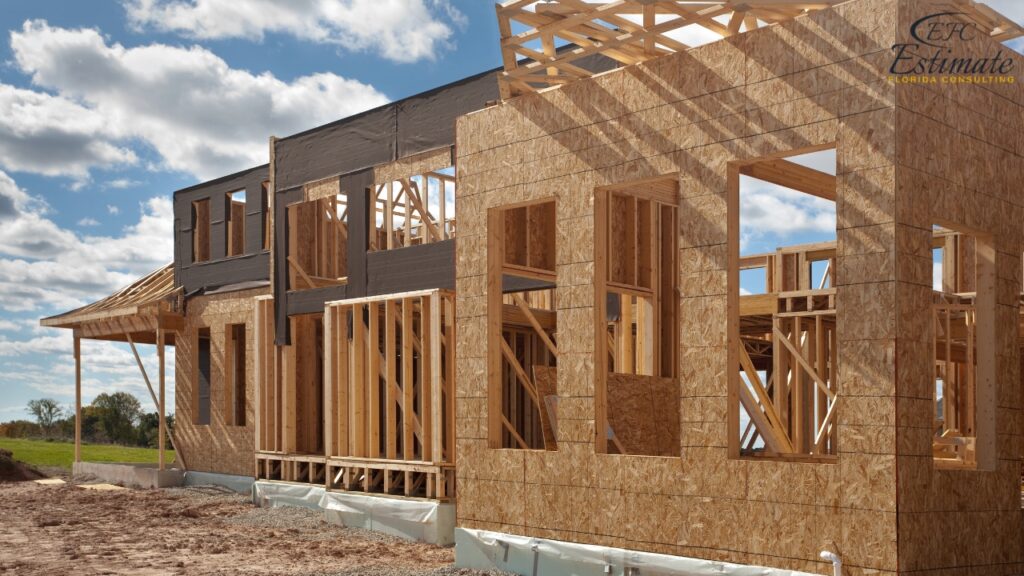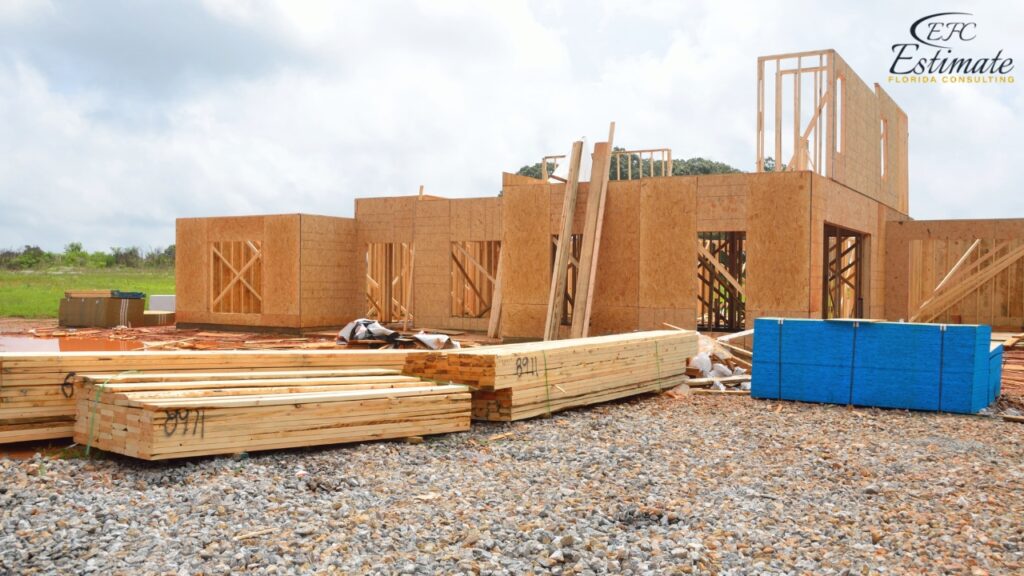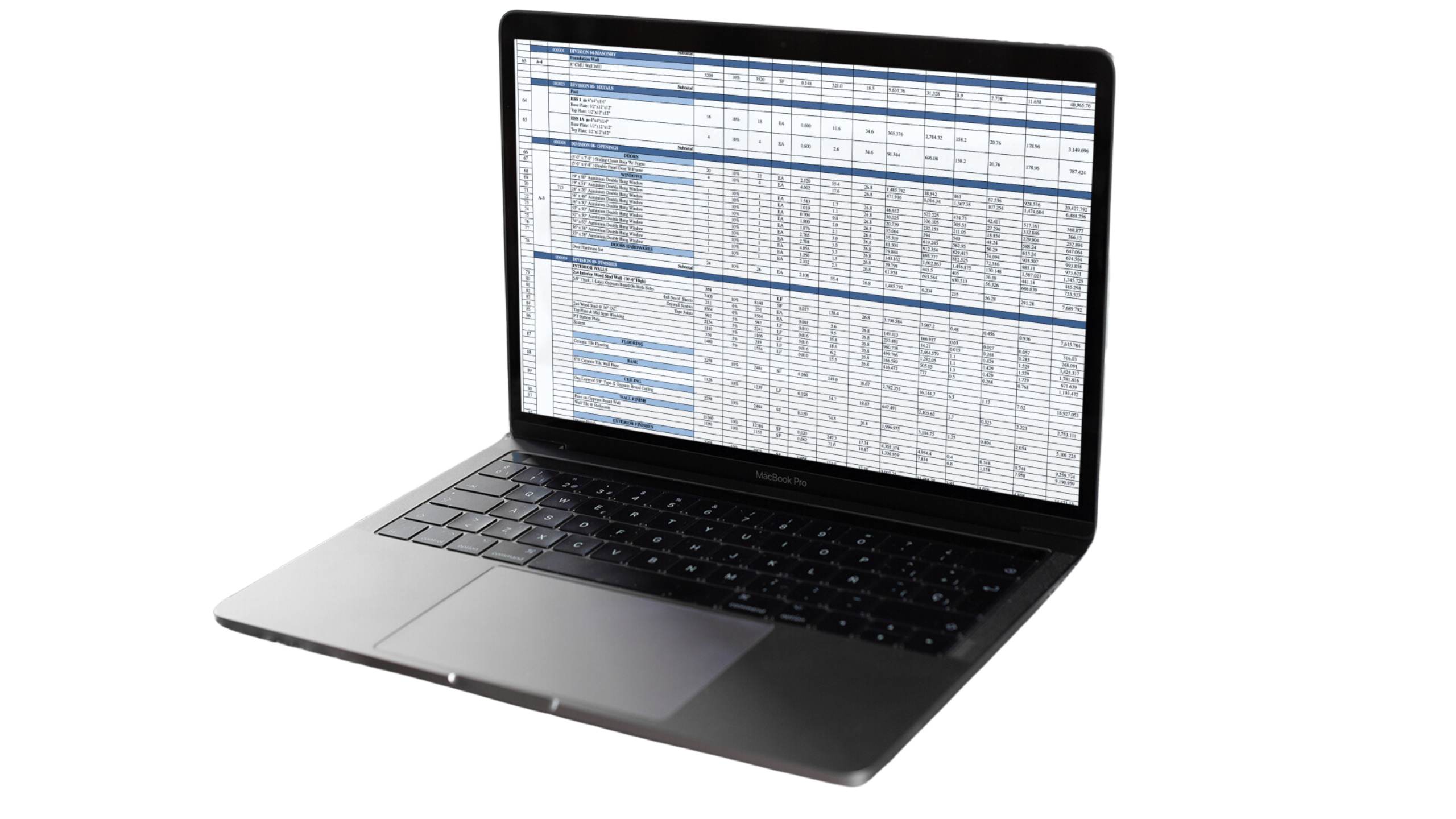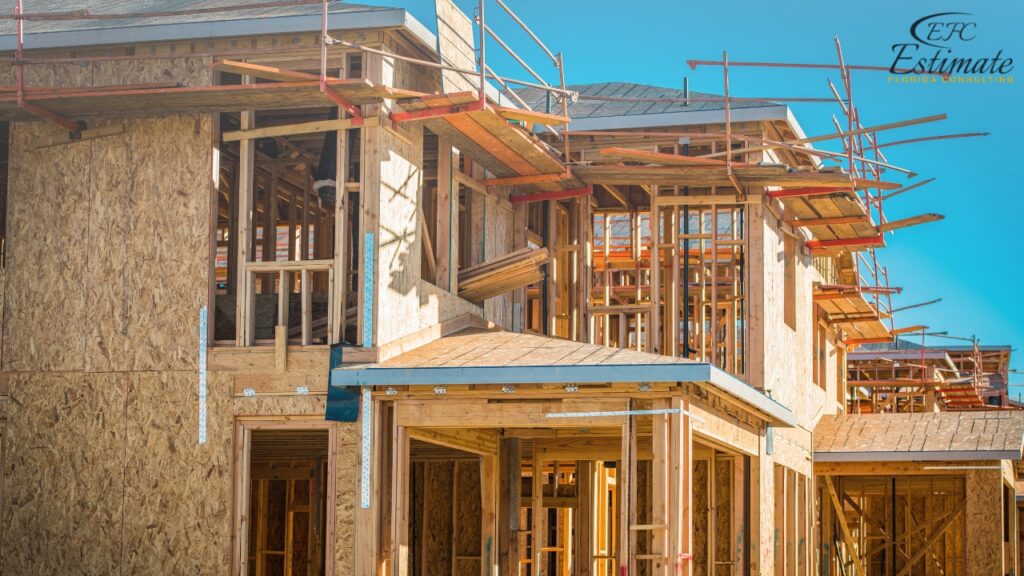How To Master Building Cost Estimating?
Building cost estimation is a critical skill in the construction industry, determining the financial viability and success of any project. Estimators play a vital role in ensuring that projects are completed within budget, without compromising on quality or scope. Mastering building cost estimating requires a deep understanding of construction methods, materials, labor, market trends, and software tools. This article will guide you through the essential steps to become proficient in cost estimation and how to refine your skills for continued success.

7 Steps to Master Building Cost Estimating
1.Understanding the Fundamentals of Construction
Before you can become a master in cost estimation, you need a solid foundation in construction basics. This includes:
Types of Construction Projects
Understanding the various types of construction projects is essential for mastering cost estimation, as each category presents unique challenges and requirements. Residential projects typically include single-family homes, apartments, and housing complexes, where the focus is often on cost-effective materials and labor efficiency, given the budget-conscious nature of homeowners or developers. These projects usually involve standard materials like wood framing, drywall, and roofing materials, and labor is often readily available at consistent rates. However, commercial projects, such as office buildings, retail stores, and shopping centers, require a different approach. These buildings often utilize steel framing, concrete, and specialized HVAC and electrical systems to meet higher safety, durability, and design specifications. Industrial projects—such as factories, warehouses, and manufacturing plants—pose even more complexity, with specialized machinery, reinforced foundations, and heavy-duty construction materials designed to withstand wear and tear. Infrastructure projects, including roads, bridges, airports, and utilities, represent the most complex category.
Building Codes and Regulations
Accurate cost estimation hinges on a thorough understanding of local building codes and regulations, which can have a significant impact on construction costs and timelines. These codes are established by governmental agencies and are designed to ensure safety, sustainability, and quality in construction projects. Estimators must be well-versed in the relevant building codes for their geographic region, as non-compliance can result in fines, legal delays, or even project shutdowns. For example, codes dictate everything from the type of foundation required for a specific soil type, to fireproofing measures, to the insulation needed for energy efficiency. In some areas, codes are especially stringent when it comes to sustainability and environmental impact, requiring green building certifications or the use of eco-friendly materials. These factors often add significant cost to the project, and failing to account for them in the estimate can lead to budget overruns. Additionally, accessibility laws, such as the Americans with Disabilities Act (ADA) in the U.S., can require special modifications to building designs, impacting both labor and material costs. Estimators must also keep track of any changes in building codes, as these can occur frequently and may vary depending on the project’s location.
Materials
The selection and understanding of construction materials are crucial components of any cost estimation. Different projects require specific materials that not only meet design and structural requirements but also fit within budgetary constraints. Materials such as concrete, steel, wood, and brick are the foundation of most construction projects, but each has unique properties that can impact the overall cost. For instance, steel is known for its strength and durability, making it a preferred choice for high-rise buildings and large-scale commercial projects, but its cost fluctuates based on market conditions and availability. Wood is often used in residential projects due to its relative affordability and ease of use, but it may not be as durable or fire-resistant as steel or concrete, which can be critical factors depending on the project’s location and purpose.

Additionally, the cost of materials is influenced by factors like regional availability, transportation costs, and market demand.
Labor Requirements
Accurately estimating labor costs is one of the most challenging aspects of construction cost estimation, as it involves not only knowing the type of labor required but also the availability, skill level, and market rates for workers in different regions. Construction labor can be broadly categorized into skilled and unskilled labor, with skilled workers including electricians, plumbers, carpenters, and masons, who are typically paid at higher rates due to their specialized expertise. Unskilled laborers, such as general construction workers or helpers, perform more basic tasks and are often paid less. However, the availability of skilled labor can vary greatly depending on the region and the size of the project, leading to potential delays or increased costs if workers are scarce. Labor costs are also influenced by union regulations, overtime pay, and the complexity of the tasks involved. For instance, highly complex or technical projects, such as the installation of sophisticated electrical systems in commercial buildings, require experienced workers whose rates are significantly higher. Estimators must factor in not just the hourly wages of workers but also indirect costs, such as health benefits, worker’s compensation, and project management fees.
2.Types of Building Cost Estimates
Mastering cost estimation means understanding the various types of estimates that are used throughout the project lifecycle. Each type serves a different purpose and requires a different level of accuracy.
Preliminary or Conceptual Estimates
Preliminary or conceptual estimates are typically the first step in the cost estimation process and are used to assess the feasibility of a construction project. These estimates are developed early on, often when only basic design concepts or rough outlines of the project are available. Because of the limited information at this stage, preliminary estimates rely heavily on historical data from similar projects or unit costs, such as the cost per square foot of a building. The main goal is to provide a general sense of the project’s potential costs to help clients or stakeholders determine whether to move forward with more detailed planning and design. While these estimates are not highly accurate, they are essential for initial decision-making, as they give a ballpark figure that can be refined as more detailed project information becomes available. However, estimators must be cautious when producing preliminary estimates, as underestimating can lead to future budget problems, while overestimating may scare off potential clients. Despite their rough nature, preliminary estimates set the foundation for project budgeting and are a crucial tool for assessing the financial viability of a construction endeavor.
Detailed Estimates
As the project design progresses and more detailed information becomes available, estimators can prepare detailed estimates. These estimates involve a comprehensive breakdown of the project’s costs, including specific quantities of materials, labor, and equipment needed for each phase of construction. Unlike preliminary estimates, detailed estimates are much more accurate and provide a closer reflection of the actual costs involved in the project. Estimators calculate quantities through quantity takeoffs, which involve measuring and analyzing construction drawings to determine the exact amount of each material required. Detailed estimates also account for labor costs, factoring in the type of workers needed, the number of hours they will work, and the prevailing wage rates. Equipment costs, such as renting or purchasing machinery, are also included. Additionally, estimators must consider indirect costs like site supervision, safety measures, and contingency funds to account for potential unforeseen issues. These estimates are vital for project planning and securing financing, as they give stakeholders a clear picture of the expected budget. Detailed estimates form the basis for the project’s financial planning and resource allocation, ensuring that all elements of the construction process are considered and accounted for.
90% More Chances to Win Projects With Our Estimate!
- Multi-Family Building
- Hotel Building
- Hospital Building
- Warehouse Building
- School & University Building
- High-Rise Building
- Shopping Complex
- Data Center Building

Bid Estimates
Bid estimates are the most detailed and precise form of cost estimation, prepared by contractors when they submit a bid to win a project. These estimates are crucial, as they directly determine whether a contractor is awarded the job. A bid estimate includes all direct costs—such as materials, labor, and equipment—as well as indirect costs, overhead, and profit margins. Contractors carefully scrutinize every aspect of the project to ensure that their estimate is competitive but still profitable. Bid estimates must be highly accurate because if a contractor underestimates the costs, they could face financial losses during the project’s execution. Conversely, overestimating could result in losing the bid to a more competitively priced competitor. In preparing a bid estimate, contractors will often consult with suppliers to get updated material prices and coordinate with subcontractors to get accurate labor costs. The estimate also includes a breakdown of overhead expenses, such as administrative costs, insurance, and permits. Finally, the contractor factors in their desired profit margin, which can vary based on the project’s size, complexity, and risk. Bid estimates are vital for both the contractor and the client, as they set the agreed-upon budget for the construction project.
Change Order Estimates
Change order estimates come into play when changes occur during the construction process that alter the original scope of work. These changes can be the result of design modifications, unforeseen site conditions, or client requests, and they require a new or updated cost estimate to reflect the revised project requirements. Change orders can impact the cost of materials, labor, and equipment, and must be accounted for to ensure that the project remains financially viable. For example, if the client decides to upgrade to more expensive materials midway through construction or if unexpected issues like poor soil conditions are discovered, the estimator must quickly and accurately calculate the additional costs. These estimates are typically more challenging to prepare because they need to be done in real time while construction is ongoing, and they must account for both the added costs and the potential delays or disruptions to the project schedule. Contractors submit change order estimates to clients for approval before proceeding with the additional work, ensuring that all parties agree on the cost implications of the changes. Accurate and timely change order estimates are essential for maintaining project transparency and financial control throughout the construction process.
3.Learning and Applying Quantity Takeoffs
One of the most critical components of building cost estimation is performing quantity takeoffs, which involves measuring materials and labor required for a project. To master this skill, consider the following steps:
Blueprint Reading
Blueprint reading is an essential skill for any construction estimator, as it allows them to accurately interpret the detailed plans and specifications of a project. Blueprints are the visual representations of the architect’s or engineer’s vision, and they include various types of drawings, such as architectural, structural, mechanical, and electrical plans. Architectural drawings outline the layout, dimensions, and design elements of the building, such as walls, doors, windows, and finishes. Structural drawings focus on the framework of the building, showing the materials and load-bearing components like beams, columns, and foundations. Mechanical and electrical drawings detail the placement of HVAC systems, plumbing, electrical circuits, lighting, and other utilities that must be installed.

To estimate costs accurately, an estimator must be able to read and interpret all these types of drawings, understand the scale of the plans, and translate them into real-world quantities of materials and labor. They also need to pay close attention to symbols, notations, and other conventions used in blueprints to ensure they capture all aspects of the project. Without proficiency in blueprint reading, an estimator risks overlooking key details, which could result in inaccurate cost projections and potential project delays or cost overruns.
Measurement Units
Understanding the units of measurement used in construction is a fundamental aspect of cost estimation, as each component of a project is quantified using specific units. For example, drywall is typically measured in square feet, concrete is measured in cubic yards, and steel is measured in linear feet or tons, depending on the form it’s used in. Estimators must be familiar with these units and know how to convert between them when necessary. For instance, they may need to convert inches to feet for certain material lengths or calculate the volume of concrete needed for a foundation by using the correct cubic yard conversion. In addition to understanding standard units, estimators must also be aware of local variations in measurement practices, as different regions or countries may use metric units instead of imperial units. Misunderstanding or miscalculating measurement units can lead to significant errors in material quantities and cost projections, making it critical for estimators to be precise in their calculations.
Manual vs. Digital Takeoffs
The process of performing takeoffs—measuring the quantities of materials needed for a construction project—can be done manually or digitally, each with its advantages and disadvantages. Manual takeoffs involve using paper blueprints, rulers, scales, and calculators to measure and record material quantities. While this method can be effective, it is time-consuming and prone to human error, especially on larger or more complex projects. On the other hand, digital takeoffs use specialized software that allows estimators to upload blueprints, perform measurements directly on the screen, and generate automatic quantity calculations. Digital takeoff tools, such as PlanSwift or Bluebeam, significantly speed up the estimating process, reduce errors, and offer more precise results. These programs often include features that allow estimators to apply different measurement units, color-code different materials, and create detailed reports that can be easily shared with clients or project teams.
4.Understanding Cost Components
A successful cost estimate is not just about adding up the cost of materials. It involves breaking down the project into its various cost components:
Direct Costs
Direct costs represent the expenses that are directly tied to the actual construction work, making them one of the most critical components of any cost estimate. These include the cost of materials, labor, and equipment, all of which are essential for executing the physical construction of the project. Material costs encompass everything from concrete, steel, and lumber to finishes like paint, tiles, and fixtures, and they often account for a significant portion of the total budget. Labor costs, another key element, include wages for skilled and unskilled workers such as carpenters, electricians, plumbers, and general laborers. These costs can vary widely based on regional wage rates, the availability of skilled workers, and the complexity of the project. Equipment costs, the third component, cover the expense of renting or purchasing machinery like excavators, cranes, and bulldozers, as well as smaller tools and equipment required for day-to-day operations. Since direct costs are directly linked to the scope of work, accurately estimating them is crucial for developing a reliable project budget. Any miscalculation or oversight in these areas can lead to significant cost overruns, delays, or even project failure.
Download Template For Master Building Project Breakdown
- Materials list updated to the zip code
- Fast delivery
- Data base of general contractors and sub-contractors
- Local estimators

Indirect Costs
Indirect costs, often referred to as overhead expenses, are those that are not directly tied to the physical construction work but are necessary to support the overall project. These include costs such as site supervision, project management, administrative expenses, and temporary utilities like electricity, water, and sanitation services for the job site. Site supervision involves the wages for supervisors, foremen, and other on-site personnel responsible for overseeing the day-to-day operations and ensuring that the work is progressing according to plan. Project management costs cover the salaries of project managers, accountants, and office staff who handle the behind-the-scenes planning, coordination, and financial management of the project. Other indirect costs may include insurance, permits, safety equipment, and job site security, which are essential for ensuring compliance with regulations and protecting the site from theft or accidents. These expenses, while not directly contributing to the construction itself, are necessary for keeping the project on track and within legal and safety guidelines. Estimators must carefully account for indirect costs to ensure that the overall project budget reflects the true cost of completing the work.
Contingencies
Contingencies are a vital part of any construction cost estimate, designed to account for unforeseen circumstances or unexpected changes during the course of the project. These could include anything from fluctuations in material prices, unexpected site conditions, design changes, or weather-related delays. Since construction projects rarely go exactly as planned, good estimators will include a contingency fund to cover these unpredictable costs. Typically, the contingency is set at 5-10% of the total estimated cost, depending on the complexity and risk level of the project. For example, a project in a region prone to severe weather or with complicated site conditions may require a higher contingency percentage. Including a contingency helps to ensure that there are funds available to deal with any issues that arise without derailing the project’s budget or timeline. However, it is essential that the contingency is neither too low, which could leave the project underfunded in the face of unforeseen costs, nor too high, which could inflate the budget unnecessarily. A well-calculated contingency fund is a sign of a thorough and realistic estimate, providing a buffer that helps manage risks and keeps the project moving forward smoothly.
Profit Margins
Profit margins represent the percentage of the total project cost that a contractor adds to the estimate to ensure that they make a profit. For most contractors, profit margins typically range from 10-20%, although this can vary depending on factors like the size and complexity of the project, the level of competition in the market, and the contractor’s financial goals. The profit margin is added on top of both direct and indirect costs, ensuring that the contractor is compensated not only for the physical work but also for the time, effort, and risk involved in managing and completing the project. While a higher margin increases profitability, it can also make the bid less competitive, especially in a crowded market. Conversely, a lower margin might win the bid but could reduce the contractor’s financial cushion, making it more difficult to handle unexpected challenges or delays.

Estimators must strike a careful balance when setting profit margins, ensuring that they are competitive while also protecting the contractor’s financial interests. A well-calculated profit margin reflects the contractor’s expertise, market position, and ability to deliver the project successfully.
5.Mastering Estimating Software Tools
With advancements in technology, software tools have become a cornerstone for modern estimators. Some popular estimating software includes:
Bluebeam
Bluebeam is an industry-leading software specifically designed for digital takeoffs and estimating. It is widely regarded for its accuracy, speed, and robust features that streamline the estimating process for construction professionals. Bluebeam allows estimators to upload digital blueprints and perform detailed quantity takeoffs directly from the software, eliminating the need for physical blueprints and manual measurements. The software is equipped with a variety of tools that enable users to measure areas, lengths, and volumes with precision, while its customizable settings allow estimators to apply specific measurement units based on the project’s requirements. Bluebeam also offers features for document management, collaboration, and markup, making it easier to communicate with team members and clients throughout the estimating process. Additionally, its integration with cloud services ensures that project data is accessible from anywhere, enabling real-time collaboration. Bluebeam’s powerful tools are particularly valuable for complex or large-scale projects where accuracy is paramount, making it a go-to solution for modern estimators seeking efficiency and precision.
PlanSwift
PlanSwift is another popular software choice for contractors and estimators, especially those looking for fast and accurate material takeoffs and bid estimates. Known for its user-friendly interface, PlanSwift simplifies the process of performing digital takeoffs by allowing users to easily drag and drop measurements onto digital plans. This software is designed to handle all types of construction projects, from residential to commercial, making it a versatile tool for a broad range of applications. One of PlanSwift’s standout features is its ability to automatically calculate material quantities and costs once measurements are input, reducing the likelihood of human error and speeding up the overall estimating process. It also offers integration with pricing databases and supports custom templates, which can help streamline repetitive tasks and ensure consistency across multiple projects. For contractors working under tight deadlines or managing multiple bids simultaneously, PlanSwift provides the speed and efficiency needed to generate accurate estimates quickly, making it a valuable asset for busy construction professionals.
ProEst
ProEst is a comprehensive estimating software designed to serve as an all-in-one solution for cost estimation, bid management, and project budgeting. It comes equipped with built-in templates, cost libraries, and customizable features that allow estimators to create highly accurate estimates tailored to specific project requirements. One of the key advantages of ProEst is its ability to generate detailed reports and analysis, which can help contractors make informed decisions about materials, labor, and equipment costs. The software also integrates well with other construction management tools, allowing users to seamlessly transition from the estimating phase to project execution. ProEst’s cost libraries provide up-to-date pricing information for materials and labor, which ensures that estimates are based on current market rates. Additionally, its cloud-based platform allows teams to collaborate in real-time, making it easier to share estimates, track changes, and keep everyone on the same page. ProEst’s all-inclusive features make it ideal for contractors seeking a robust, data-driven approach to cost estimation.
Buildertrend
Buildertrend is a cloud-based platform that offers a wide range of tools, including estimation, project management, and client communication, making it a versatile solution for construction professionals. While Buildertrend is known for its project management capabilities, it also features powerful estimation tools that enable contractors to create detailed cost estimates and track expenses throughout the project lifecycle. One of Buildertrend’s strengths is its seamless integration with accounting and payroll systems, which allows contractors to easily manage budgets, track job costs, and ensure profitability. The platform also facilitates communication between contractors, clients, and subcontractors, providing transparency and improving collaboration on estimates and other project details. Its mobile-friendly interface ensures that estimators and project managers can access and update estimates from any location, keeping the entire team aligned on project costs and timelines. Buildertrend’s combination of estimation, project management, and client communication features makes it an excellent choice for contractors looking to streamline their operations.
Get 5 New Leads Next 7 Days With Our System
- Multi-Family House
- Single-Faimly House
- Modern House
- Duplex
- Ranch House
- Bungalow
6.Staying Updated with Market Trends and Prices
Construction costs fluctuate due to material shortages, labor availability, fuel prices, and economic conditions. To be a master estimator, you must stay informed about:
Material Costs
Material costs are one of the most significant factors in construction cost estimation, and they can fluctuate significantly due to various market conditions. For materials like steel, concrete, wood, and glass, it’s important to regularly check and update their prices, as these are core components in most construction projects. Market conditions such as supply and demand, transportation costs, import tariffs, and seasonal availability all play a role in determining the cost of these materials. For example, steel prices may rise sharply due to increased demand in the global market or supply chain disruptions, while wood prices might fluctuate based on environmental factors like wildfires or logging regulations. Staying updated on the latest prices by maintaining relationships with suppliers, reviewing industry reports, and using cost databases like RSMeans can help ensure that your estimates reflect the most accurate and current material costs. This vigilance is crucial because material cost variations can significantly impact the overall project budget, especially on large-scale or long-term construction projects where price changes can occur unexpectedly.
Labor Rates
Labor costs are another critical component in construction cost estimation, and like material costs, they can vary depending on the region, trade, and current market conditions. For example, wages for skilled trades such as electricians, plumbers, and carpenters can differ significantly from one area to another based on the local supply of labor, union agreements, and regional economic conditions. It’s essential to regularly update your labor cost database to reflect changes in wage rates, as well as consider additional factors such as overtime, benefits, and worker availability. Estimators also need to account for the varying productivity rates of workers, as more experienced laborers might complete tasks faster and more efficiently than less skilled workers, thereby affecting overall labor costs. Labor shortages or increased demand in a particular region can lead to wage inflation, further driving up costs. By keeping track of these factors and regularly updating labor rates, estimators can create more accurate and realistic estimates that align with current market conditions.
Global and Local Trends
Understanding global and local trends is essential for accurate cost estimation, as broader economic forces can have a direct impact on the construction industry. Factors like inflation, supply chain disruptions, environmental regulations, and government policy changes can affect both material prices and labor costs. For example, inflation can drive up the costs of raw materials and fuel, which in turn affects transportation and manufacturing costs. Similarly, disruptions in the global supply chain, such as those caused by natural disasters, trade disputes, or pandemics, can delay material availability and increase prices. Local trends, such as changes in building codes or new environmental regulations, can also lead to increased costs for compliance, as contractors may need to use specific materials or construction methods to meet new standards. Estimators who stay informed about these trends are better equipped to adjust their estimates to account for potential cost increases or project delays, ensuring that they remain competitive while minimizing the risk of budget overruns.
7.Gaining Practical Experience
There’s no substitute for hands-on experience in mastering building cost estimation. Here’s how you can build your practical knowledge:
Site Visits
Regular site visits are a crucial practice for anyone seeking to master cost estimation. By visiting construction sites, estimators can gain a hands-on understanding of the realities of construction timelines, material usage, and labor efficiency, which are often difficult to grasp fully from plans and specifications alone. On-site observations help estimators see how materials are being used, how quickly tasks are being completed, and what types of unexpected challenges arise during the construction process. For example, delays caused by weather, equipment malfunctions, or unforeseen site conditions can impact labor and material costs, which an estimator would need to account for in future estimates. Visiting sites also offers the opportunity to observe how different teams work together and identify areas where inefficiencies may occur, such as material wastage or bottlenecks in workflow. By regularly interacting with site managers, contractors, and workers, estimators can develop a better understanding of how theoretical estimates translate into real-world execution, enabling them to create more accurate and practical cost projections.
Shadowing Senior Estimators
Shadowing senior estimators is an invaluable learning experience for those looking to refine their cost estimation skills. Experienced estimators have spent years, or even decades, honing their craft, and they can provide insights and tips that can only be gained through practical experience. By shadowing them, you can learn how to approach complex estimates, navigate difficult project constraints, and use judgment to fill in gaps where data might be lacking. Senior estimators also tend to have a deep understanding of industry standards, supplier relationships, and historical cost data, which can inform better decision-making during the estimation process. They can guide you on how to handle tricky situations, such as dealing with fluctuating material prices, tight deadlines, or uncertain project scopes. Additionally, you’ll gain exposure to the software and tools they rely on and how they interpret contract documents, blueprints, and client requirements. Mentorship from senior estimators accelerates the learning curve, helping you avoid common pitfalls and develop the strategic thinking necessary to become a proficient cost estimator.
Working on Real Projects
Working on real projects is one of the most effective ways to build your cost estimating expertise. Starting with smaller projects is ideal, as these offer a more manageable scope and allow you to focus on understanding the basics of material quantities, labor needs, and cost factors without becoming overwhelmed. Estimating small projects helps you develop foundational skills like reading blueprints, performing takeoffs, and using cost databases. As you gain confidence and experience, gradually move on to larger and more complex jobs, where you’ll need to consider additional factors such as equipment usage, subcontractor costs, and contingencies for design changes or delays. Each project presents new learning opportunities, whether it’s navigating unforeseen site conditions, adjusting for market fluctuations, or managing tight budget constraints. The practical experience of estimating real projects teaches you how to apply theoretical knowledge to actual situations, fine-tuning your ability to forecast costs accurately across a range of construction types and challenges. Over time, working on increasingly complex projects will enhance your ability to develop reliable, detailed estimates that account for all the nuances of modern construction work.
Conclusion
Mastering building cost estimation is a continuous journey that requires a combination of technical knowledge, practical experience, and the use of modern software tools. By understanding the fundamentals of construction, perfecting quantity takeoffs, staying updated with market trends, you will become a skilled and trusted estimator. Always aim to improve through continuous learning, and over time, your expertise will not only save your company money but also ensure the success of construction projects.
FAQs on Building Cost Estimation
Building cost estimation is the process of forecasting the financial requirements for a construction project, including materials, labor, and overhead. It is crucial for determining the project’s feasibility, securing funding, and ensuring that the project remains within budget, ultimately influencing its success.
The main types of cost estimates include:
- Preliminary or Conceptual Estimates: Rough estimates used in the early stages of a project.
- Detailed Estimates: More accurate estimates that include quantities of materials and labor as the design progresses.
- Bid Estimates: The most detailed estimates used by contractors to bid on projects.
- Change Order Estimates: Adjustments made to the original estimate when changes in scope occur during construction.
Key skills include:
- Proficiency in reading blueprints and construction drawings.
- Understanding various construction materials and their costs.
- Experience in performing quantity takeoffs.
- Familiarity with cost components such as direct and indirect costs, contingencies, and profit margins.
- Competence in using estimating software tools.
Technology enhances accuracy through digital takeoff software that allows estimators to quickly and accurately measure quantities from digital plans. It also enables access to up-to-date cost databases and facilitates collaboration among project stakeholders, reducing errors and improving efficiency.
Regularly check material prices, labor rates, and economic conditions. Build relationships with suppliers and subcontractors for real-time pricing data, and engage with construction associations and industry publications to stay informed about changes that could impact costs.
Gaining practical experience can be achieved through site visits, shadowing experienced estimators, and working on real projects. Start with smaller projects to build your skills and gradually take on larger, more complex jobs to deepen your understanding of the estimating process.
Google Reviews



Process To Get The Master Building Cost Estimate Report
Here I am going to share some steps to get the master building cost estimate report.
-
You need to send your plan to us.
You can send us your plan on info@estimatorflorida.com
-
You receive a quote for your project.
Before starting your project, we send you a quote for your service. That quote will have detailed information about your project. Here you will get information about the size, difficulty, complexity and bid date when determining pricing.
-
Get Estimate Report
Our team will takeoff and estimate your project. When we deliver you’ll receive a PDF and an Excel file of your estimate. We can also offer construction lead generation services for the jobs you’d like to pursue further.

